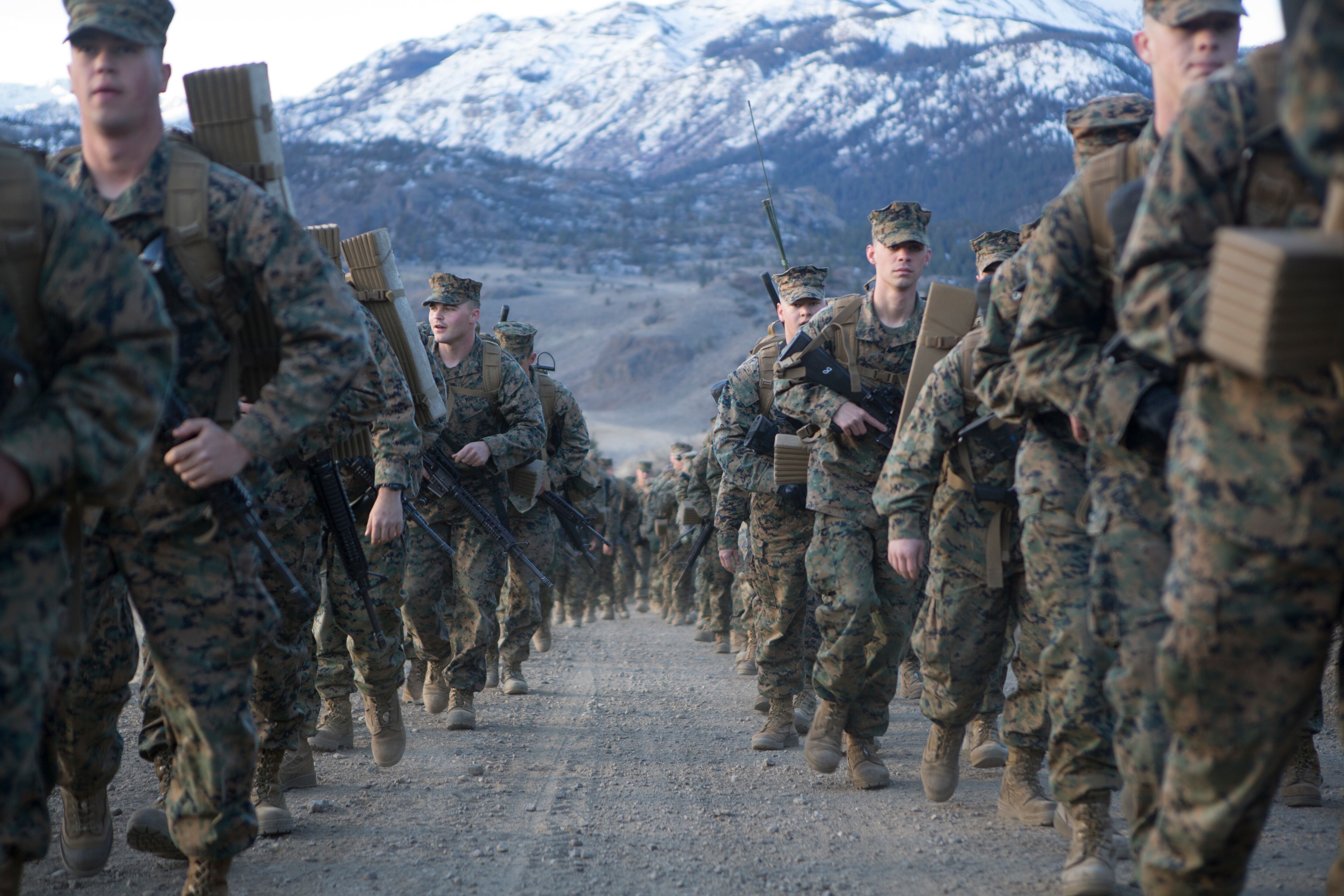No more busing up to Twentynine Palms, California, for training, at least for the time being.
All units with the 1st Marine Division will continue to train aboard their home stations “until further notice” as the Corps continues to implement policies to help stem the spread of COVID-19, I Marine Expeditionary Force told Marine Corps Times in an emailed statement.
Commandant of the Marine Corps Gen. David Berger told reporters March 26 that an integrated training exercise involving 3rd Battalion, 1st Marines slated for April aboard the Twentynine Palms training facility had been axed.
At least two sources within the unit told Marine Corps Times that 3rd Battalion, 1st Marines was still planning to kick off training despite news of the canceled exercise. Officials with I MEF said 3/1 is not headed to Twentynine Palms.
RELATED

Any travel to the Twentynine Palms base would have occurred amidst a Defense Department domestic travel ban implemented to slow the spread of COVID-19.
“As we navigate the COVID-19 health crisis, we must strike a balance between maintaining our operational readiness and implementing the necessary health precautions to preserve our combat power and protect our communities,” I MEF said in an emailed statement.
I MEF explained that units with the 1st Marine Division are still preparing for deployments.
The Marine Corps had “scaled back or canceled” a number of service level exercises as COVID-19 continues to disrupt U.S. military training and operations around the globe, acting Navy Secretary Thomas B. Modly told reporters at the Pentagon Thursday morning.
Exercises aboard the Twentynine Palms and the Marine Corps Mountain Warfare Training Center, both located in California, have either been scaled back or canceled, Modly said.
The Corps “has to be ready to respond to a problem around the world," Berger said March 26 at the Pentagon.
“We’ve never been given advanced notice when that will happen” so Marines “need to conduct training that is necessary” to be ready when the nation needs it to act, Berger said.
The Corps has “curtailed” or “tailored” training where it can to include spreading Marines out more, Berger said. Pistol ranges are now spread out more, with more space between shooters to allow for social distancing, which means more relays need to be run.
But Berger said that Marines “can only do so much” to “moderate social distancing” during live-fire events, especially when Marines are “moving down range.”
“To that end, we are examining ways to adapt the scope and scale of training and exercises in an effort to complete mission essential tasks while still adhering to CDC guidance as much as possible,” I MEF said.
Shawn Snow is the senior reporter for Marine Corps Times and a Marine Corps veteran.




